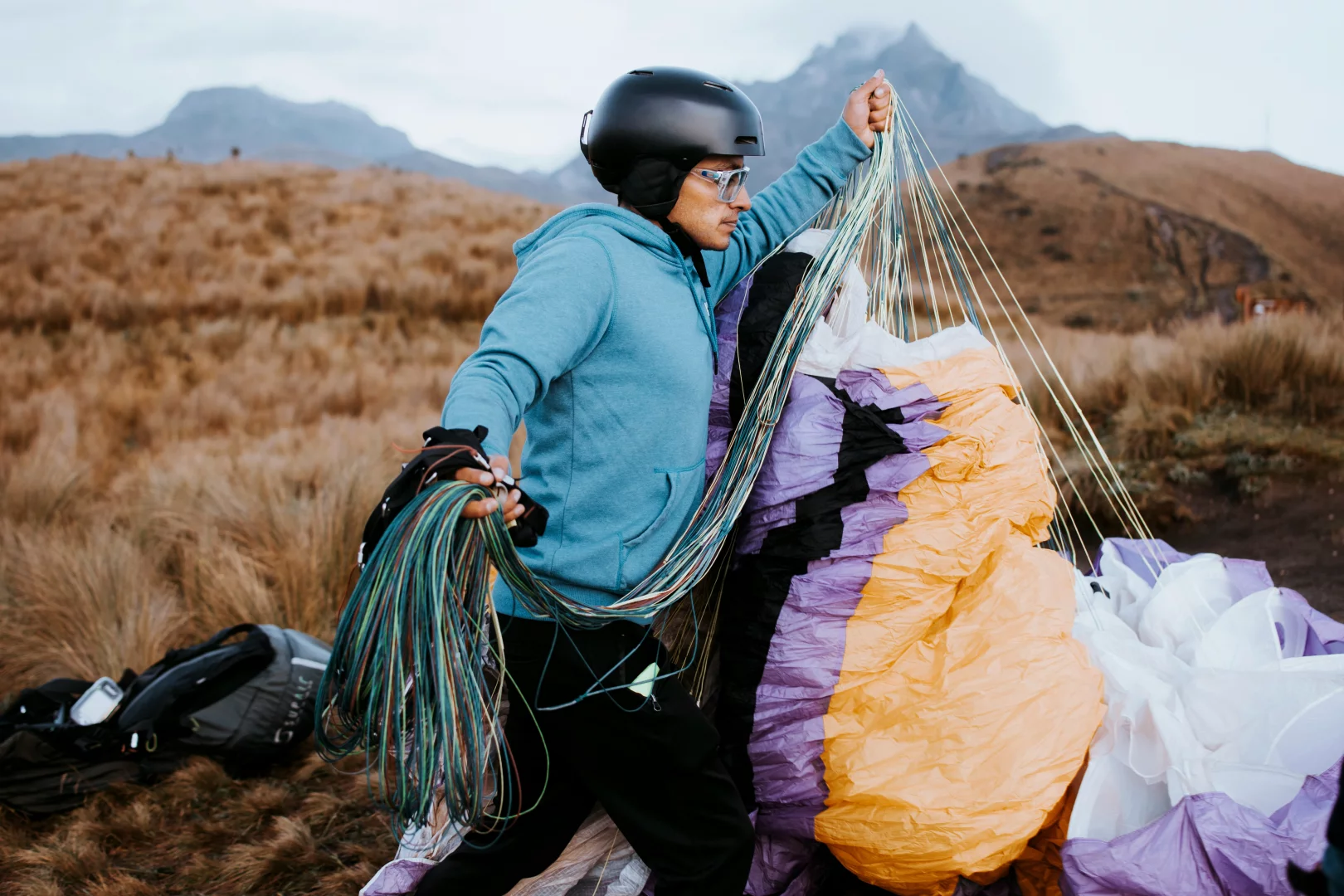The challenges and pleasures of paragliding in the mountains
Paragliding is an aerial sport that offers a unique perspective on the world. But when you choose to practice it in the mountains, you enter a whole new world, where the challenges are many.
In this article, we'll explore the unique challenges of paragliding in the mountains, with a particular focus on the stimulating and exhilarating sport of cross-country flying.
What is cross-country paragliding?
Cross-country paragliding, often referred to as "vol rando", combines a passion for the mountains with the pleasure of free flight. Unlike take-offs from conventional sites, cross-country flying involves walking or hiking to the take-off point, which is often located at altitude.
How does a cross-country paragliding trip work?
A typical cross-country paragliding trip begins well before take-off. Enthusiasts plan their route, assess the weather conditions and prepare their equipment carefully. Once at the launch site, they prepare their wing with precision, paying particular attention to every detail to ensure a safe flight.
Mountain take-offs require a thorough understanding of the local aerological conditions. Air currents can be turbulent and unpredictable, creating additional challenges for pilots. Mastery of specific techniques, such as controlling the glider in variable thermal conditions, is essential to overcome these obstacles.
What equipment is needed for cross-country paragliding?
Cross-country paragliding requires specific equipment adapted to the demands of the mountains. In addition to the paraglider itself, pilots often use lightweight harnesses and compact rescue parachutes to minimise weight and make it easier to walk to the take-off point. Appropriate clothing for the changing weather conditions at altitude is also essential.
Competitive challenges and extreme feats
It's worth mentioning that with the development of lightweight equipment in recent years, a number of specific competitions have emerged. Events such as the X-Alps, the X-Pyr and the Bornes to Fly, which takes place in the Savoie region of France, showcase the ability of pilots and their equipment to cover long distances over often demanding mountain terrain.
As well as competitions, there are intrepid mountaineers who include paragliding in their high-altitude expeditions. These adventurers carry out mountain flights at extreme altitudes, defying the elements and pushing back the limits of this aerial sport.
The constraints of cross-country paragliding
Although cross-country flying is a rewarding experience, it also has its share of constraints. Changing mountain weather can make flying conditions unpredictable, requiring constant flexibility and adaptation on the part of pilots. What's more, finding a suitable and safe take-off site can sometimes be a challenge in itself, especially in remote areas.
In conclusion, paragliding in the mountains, and more particularly cross-country flying, offers a unique adventure for free-flight enthusiasts. Although the challenges can be many, the moments of grace and freedom in the air are well worth the effort. Whether you're a beginner looking to push your limits or a seasoned pilot in search of new sensations, paragliding cross-country flights promise an unforgettable experience in the heart of nature.







